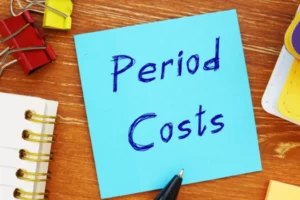Content
A retail business with multiple stores or warehouse facilities may find it difficult to monitor product movement in (and across) these varied spaces. Fortunately for them, the retail inventory method can estimate goods on the move, thus offering some solid appraisals within the larger inventory picture. The retail inventory method is often used by retailers who are short on time, since this is a helpful strategy to estimate their merchandise value on the fly. Regardless of the system you choose for determining the cost of goods sold and for counting inventory, it’s important to keep accurate records and to stay on top of evaluating your inventory and calculating costs. Doing so can save you time at the end of the year when you’re preparing tax statements, and it helps you keep track of your revenue and profits.
How is retail accounting method different from cost?
Retail accounting tracks your inventory based on the price that you sell each item to your customers. Cost accounting tracks each item based on the total cost you paid to acquire each item.
To avoid stalling operations, many retailers rely on the retail inventory method to account for their inventory. While not identical to a physical count, the retail inventory method can help retailers get an idea of how much inventory they have without getting bogged down counting every unit. “Price and markup changes make retail accounting much less accurate, and many industries are dealing with those right now. In an uncertain economic climate, it’s important to understand all the accounting options at your disposal. This article will guide you through the retail accounting method and hopefully help you decide if this method is right for your business. To date, he has entrusted the responsibility of inventory valuation, or the monetary value of his inventory, to another employee.
The advantages of the retail method of accounting
In this situation, you may want to use the weighted-average costing method by dividing the total cost of the dice by the total number of dice you purchased. The retail inventory method is one of only two methods accepted for tax reporting purposes and accepted by the American Institute of CPAs under the Generally Accepted Accounting Principles. RIM also stands as the most widely used method by merchandising companies to calculate inventory values. Inventory is actually considered an asset — something your business owns, which is recorded on your business’s balance sheet — until you sell it or account for it as shrinkage from theft or damage. At that point, the expense for the purchase of the inventory is recorded as cost of sales (COS) or cost of goods sold(COGS) on your profit and loss statement. The retail method of accounting provides several advantages for retailers when calculating cost for profitability and inventory that impacts every aspect of the merchandising process.

Use the calculator below to compute your estimated ending inventory at cost using the conventional or average method of retail accounting. The periodic method of tracking your inventory can be less convenient and more labor-intensive, but it might be preferable if your company can’t afford a fully capable POS system. This inventory-tracking method requires you to manually count and track inventory periodically, such as weekly or monthly. A major drawback of this method is that, because you don’t have a POS system tracking your sales, you don’t have a way to determine what items were sold, stolen or broken.
Conventional Retail Inventory Method
In this example, the Pizzeria’s cost-to-retail ratio is $50,000 divided by $100,000, which would be 50%. The retail price is the amount that the customer pays to purchase goods or services while the selling https://www.bookstime.com/ price is the amount that the seller receives after deducting taxes and fees, such as shipping and handling. Follow these steps to use the retail inventory method to calculate your monthly ending inventory.
Who uses retail accounting?
Retail accounting is a special type of inventory valuation commonly used among retailers. As such, the term “retail accounting” is a bit misleading, as it is more of an inventory management method than an accounting method. In retail accounting, you estimate your inventory's value rather than calculate it manually.
If you’re a multi-store retailer, your solution should have the ability to surface your data at both a macro and micro level. So whether you need to determine the inventory values for one location or need to do it for a group of stores, your stock management system should help you do it. What’s more, the retail inventory method does not work well for merchants that don’t have a consistent cost-to-retail ratio. If your profit margins vary from one product to another, then this technique won’t give you an accurate inventory value.
How to keep on top of your inventory with Cogsy
To get the most effective estimates possible, make sure you follow these steps in order every time you run your calculations. For example, if your supermarket buys its produce for 70 cents then sells the produce for $1.00, you would have a gross profit of 30 cents. 30 cents divided by the selling price of $1.00 equals out to be a gross profit margin of 30% of sales, which also means that your supermarket’s cost of goods sold is 70% of sales. The average cost method considers both markups and markdowns in the determination of the cost-to-retail ratio. As a result, the cost-to-retail ratio will be higher than in the conservative method. The accounting for retailers is an inventory estimation technique used to compute the value of ending inventory without having to take a physical count.
- “Price and markup changes make retail accounting much less accurate, and many industries are dealing with those right now.
- Also, it’s often used to estimate the number of missing inventory that was caused by theft or some other situation.
- As a retailer, you’re hurtling towards growth — you have hundreds of customers, and thousands of units of inventory in storage.
- Retail merchandising systems can process item level cost data across many SKU/location combinations at near-real time speeds, providing retailers the ability to use item level data in planning and analytics.
- However, it’s handy to compare it to commonly used forms of accounting.
- A wholesaler has $20,000 worth of inventory at the beginning of a period — meaning that beginning inventory for that period cost them $20,000.
- (b) Assuming that the market price as of December 31, 2017, is $2.70, instead of $3.30, how would you treat this situation in the accounts and statements?
They sell the tables for $400 each and chairs for $200 each and they’re both sold at a 40% markup from the purchasing price. The retail method can also help you keep account of the goods you’re buying or selling, know how much is left over, and maintain the right amount of inventory at all times. If, for any reason, you have different markups — say, because of an increased price for raw materials — your results will be inaccurate. And these inaccurate results can lead to poor forecasting for your business (meaning stockout or dead stock situations). Weighted average cost (WAC) helps to calculate the average cost of your inventory per unit.
Build your dream business for $1/month
And if that wasn’t enough, Cogsy takes things a step further by streamlining your POs. With a single click, Cogsy can create a purchase order tailored to your unique inventory needs. And when your inventory value is low, it’ll free up more working capital, which you can use to invest in product development, marketing campaigns, or wherever else you see fit. You can preserve optimal inventory levels by ordering only what you need to meet demand. This, in turn, keeps your inventory value low (without the inventory risk of being unable to meet customer expectations).
- Keep track of your stock, purchases and sales with our handy inventory spreadsheet.
- This method is based on the relationship between the cost of merchandise and its retail price.
- This means that it doesn’t consider any changes in markup in the current period.
- Because the last units purchased are sold first, your ending inventory valuation would be based on the cost of your oldest units.
- Otherwise, the calculation cannot be accurate, since the cost-to-retail ratio isn’t consistent.
- If a skincare retailer sells face cream for $25 and purchases each bottle for $5, the cost-to-retail ratio would be 20%.
You may consider doing it every quarter, every year, or whenever you see fit. What this is mind, it only makes sense to keep a pulse of the value of your inventory so you can make the right decisions when it comes to what to order, what to invest in, and when to carry more products. Inventory is the bread and butter of any retailer, which is why you likely have a lot of your capital tied to your stock. Many or all of the products featured here are from our partners who compensate us. This influences which products we write about and where and how the product appears on a page. We believe everyone should be able to make financial decisions with confidence.
Retailers with consistent markups
It’s important for retail stores to perform a physical inventory valuation periodically to ensure the accuracy of inventory estimates as a way to support the retail method of valuing inventory. The retail method factors in the cost of the inventory, retail markup, and sales to estimate the total worth of your current inventory on hand. By subtracting the total amount of sales from the beginning inventory and then multiplying that amount by the cost-to-retail ratio, you will arrive at an estimated worth of all unsold inventory. The retail method will only produce an estimated total since you will not be able to factor in any items that were damaged, lost, or stolen.
